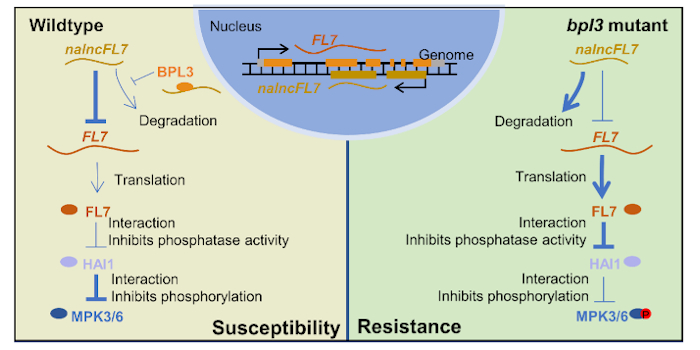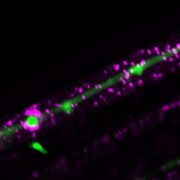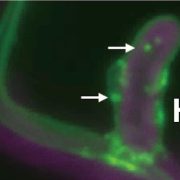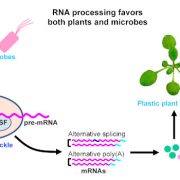A cascade facilitates Arabidopsis resistance to pathogens
Ai and Li et al. explore the mechanism by which an RNA-binding protein regulates plant immunity.
By Gan Ai1,3, Tianli Li 1,3, Hai Zhu1, Xiaohua Dong1, Xiaowei Fu1, Chuyan Xia1, Weiye Pan1, Maofeng Jing1, Danyu Shen1, Ai Xia1, Brett M. Tyler2, Daolong Dou1*
1College of Plant Protection, Academy for Advanced Interdisciplinary Studies, Nanjing Agricultural University, Nanjing, 210095, China
2Center for Quantitative Life Sciences and Department of Botany and Plant Pathology, Oregon State University, Corvallis, OR, United States
Background: RNA-binding proteins are a diverse class of proteins defined by their ability to interact with RNA molecules. They affect nearly all stages of the plant life cycle as they contribute to seed germination and development, plant growth and responses to stress. Nevertheless, the role of RNA-binding proteins in plant-pathogen interactions is still largely unknown. We previously reported that the RNA-binding proteins BPA1-Like Proteins (BPLs) are conserved negative regulators of plant immunity. Among these, BPL3 makes a major non-redundant contribution to this function.
Question: What is the underlying mechanism by which BPL3 regulates plant immunity?

Findings: We demonstrated that BPL3 regulates the transcript level of a natural pair of sense and anti-sense transcripts, FL7 (FORKED-LIKE 7) and its cis-natural antisense lncRNA of FL7 (nalncFL7). nalncFL7 suppresses FL7 at the transcriptional level and BPL3 binds to and stabilizes nalncFL7. FL7 interacts with the type 2C protein phosphatase HIGHLY ABA-INDUCED PP2C1 (HAI1). By suppressing HAI1 phosphatase activity, FL7 promotes phosphorylation of the kinases MPK3 and MPK6, and thus enhances immune responses. BPL3 and FL7 were conserved in all the tested plants, but the BPL3-nalncFL7-FL7 cascade was found in Brassicaceae plants. Thus, our study identified a conserved BPL3-nalncFL7-FL7 cascade that acts in plant immunity.
Next steps: We found that BPL3 and FL7 are conserved in land plants while nalncFL7 was conserved in Brassicaceae, which indicates that the BPL3-nalncFL7-FL7 cascade might have arisen after the divergence of Brassicaceae species. Whether and how BPL3 could regulate FL7 outside of the Brassicaceae remains unknown.
Reference:
Gan Ai, Tianli Li, Hai Zhu, Xiaohua Dong, Xiaowei Fu, Chuyan Xia, Weiye Pan, Maofeng Jing, Danyu Shen, Ai Xia, Brett M. Tyler, Daolong Dou. (2023). BPL3 binds the long noncoding RNA nalncFL7 to suppress FORKED-LIKE7 and modulate HAI1-mediated MPK3/6 dephosphorylation in plant immunity https://doi.org/10.1093/plcell/koac311






